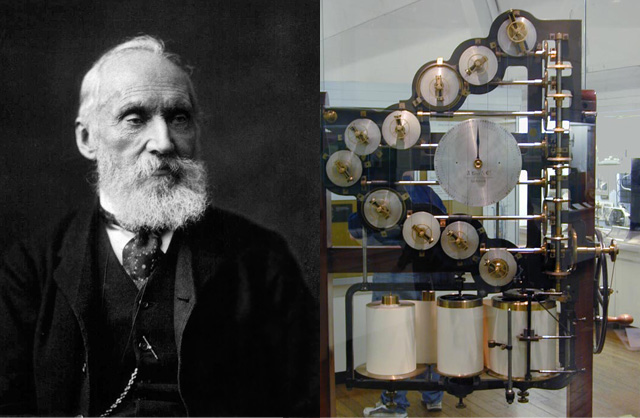Riding the tidal wave of prediction
Gregory Ronczewski leads the design of the TeamFit - see his skill profile
When we hear about William Thompson, better known and remembered as Lord Kelvin, absolute temperature and laws of thermodynamics comes to mind. In 1876 this brilliant Scottish physicist proposed a machine that would predict tidal movement in the ocean. Until then, people understood the forces behind tides, but it was experience and individual knowledge passed from generation-to-generation that allowed sailors to navigate coastal waters. There was no predictive model available.

Thompson's machine was called a harmonic analyzer. Its operator would feed it with past records of the tides. The machine would isolate several variables into a simple function. The harmonic analyzer had a total of 11 gauges displaying 11 numbers: the pull of the moon, pull of the sun, average water level and so on. Theoretically, all this could be calculated on a piece of paper, Thompson noted. The output was not a record of the past, but a prediction of the future. In 1876 the tide predictor accurately drew a year's worth of tides in 4 hours. In 1881, all it took was 20 minutes. The invention was well received and … put aside. People preferred to rely on tradition.
I found this fascinating story of how analogue calculating machines came to life in a book A mind at Play - how Claude Shannon Invented the Information Age by Jimmy Soni and Rob Goodman. The reverse engineering that helped to predict the future by separating each variable into its own little universe based on the past record is a harbinger of predictive analytics, the science that is transforming talent management and putting skill and expertise management at center stage.
Assuming that TeamFit's skill analyzing algorithm measures all the relevant variables we will be able to predict future performance. Relevant data includes who claimed a particular skill, what other skills were claimed by the same person, what projects this person worked on, the role they played, what other ways the skill has been used, who else was on the project and what skills the other people applied. Other data that TeamFit is investigating include how many times the skill was searched for, and in which location. We also calculate the distribution of the skill rank scores and different ways skills can be connected in the Skill Graph. Each variable operates in its small universe. Together, they form a record and from this record we can predict a person's potential skills and the probability of their contributing to project success. I can see similarities between Thompson's machine and TeamFits approach to understanding and using skill data. Unfortunately, the similarity extends to current approaches to skill management and team assembly. People still prefer to do it the old way. But that is beginning to change!
Another point that I found in the book on Claude Shannon is how information needs to be treated at an abstract level. Human sorting and analyzing of data will always be altered by individual preferences. The machine, on the other hand is neutral. It performs its tasks without emotional attachment producing objective results. At the individual level we appreciate very much the uniqueness of each TeamFit Skill Map. The insight it gives us to each individual. Beneath this, though, there is powerful computational machinery traversing the Skill Graph, measuring role match, team match and team fit, and using this to uncover human potential and predict performance.
Many organizations, even whole governments, are now going through a digital transformation - the application of digital technology to all aspects of our society. This is the third stage of embracing digital technologies: digital competence, digital usage, and finally digital transformation.
In the same way as the analogue-measured information in Kelvin's analyzer produced a view of the future, TeamFit Skill Management Platform allows individuals, teams and companies to look ahead by observing how the skill graph changes over time. Our vision is to help individuals, teams and organizations to uncover then realize their potential and predict project success.


